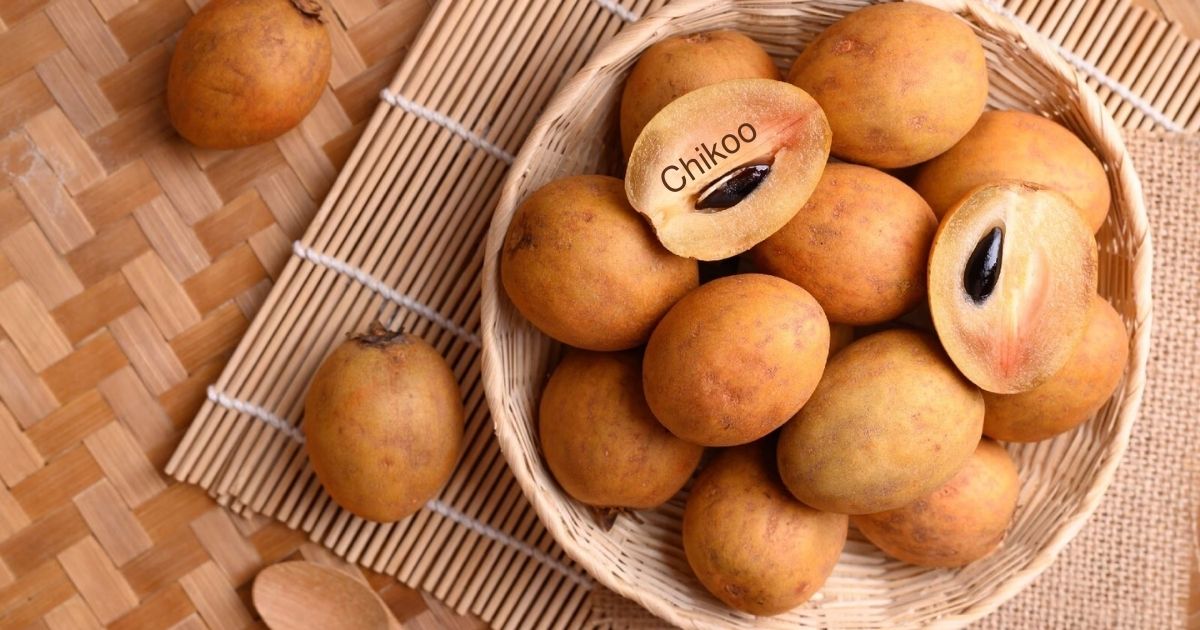Chikoo, or sapodilla (Manilkara zapota), is a tropical fruit celebrated for its unique sweetness and rich nutritional profile. Native to Central America and the Caribbean, this delicious fruit has gained popularity in various parts of the world, especially in countries like India, Mexico, and the Philippines. With its brown, rough skin and soft, sweet, grainy flesh, chikoo is not only a delightful treat but also a powerhouse of health benefits. Let’s dive deeper into this remarkable fruit and explore its many facets.
The Botanical Background of Chikoo
Chikoo belongs to the Sapotaceae family, which includes other fruits like mamey sapote and canistel. The tree can grow up to 30 feet tall and thrives in tropical and subtropical climates. Its fruit is round or oval, measuring about 2 to 4 inches in diameter. When ripe, the skin turns a brownish color, and the flesh inside is a light beige with a sweet, aromatic flavor.
Nutritional Value of Chikoo
Chikoo is not just a treat for the taste buds; it is also packed with essential nutrients. A 100-gram serving of chikoo contains:
Calories: Approximately 83
Carbohydrates: 19.9 grams
Fiber: 5.3 grams
Sugars: 14.7 grams
Fat: 0.1 grams
Protein: 0.4 grams
In addition to these macronutrients, chikoo is rich in vitamins and minerals, including:
Vitamin A: Important for vision and immune function
Vitamin C: Boosts immunity and acts as an antioxidant
Potassium: Regulates blood pressure and supports heart health
Calcium: Essential for strong bones and teeth
Health Benefits of Chikoo
Boosts Immunity
The high vitamin C content in chikoo plays a crucial role in enhancing the immune system. Consuming chikoo can help the body fight off infections and illnesses, keeping you healthy.
Promotes Digestive Health
With a good amount of dietary fiber, chikoo aids in digestion by preventing constipation and promoting regular bowel movements. Fiber is essential for a healthy gut and can help in maintaining a healthy weight.
Supports Heart Health
Chikoo is low in cholesterol and high in potassium, which helps regulate blood pressure and supports heart health. The antioxidants in chikoo also contribute to reducing inflammation and improving cardiovascular health.
Enhances Skin Health
The vitamin A in chikoo promotes healthy skin by preventing dryness and maintaining its elasticity. Additionally, the antioxidants help combat free radicals, reducing the signs of aging.
Provides Energy
The natural sugars found in chikoo, such as fructose and glucose, provide a quick energy boost, making it an ideal snack for athletes and those needing an energy lift during the day.
Culinary Uses of Chikoo
Chikoo is a versatile fruit that can be enjoyed in various ways. Here are some popular culinary uses:
Fresh Consumption: The simplest way to enjoy chikoo is to eat it fresh. Simply slice the fruit in half, remove the seeds, and scoop out the sweet flesh with a spoon.
Smoothies and Juices: Chikoo can be blended into smoothies or juices for a delicious and nutritious drink. Its sweet flavor pairs well with other fruits like bananas and mangoes.
Desserts: Chikoo can be used in various desserts, including ice creams, custards, and puddings. It adds a unique sweetness and texture to sweet dishes.
Salads: Adding chiko,o to fruit salads or green salads can enhance their flavor profile and nutritional value. The sweet and earthy taste of chiko,o complements other fruits and vegetables beautifully.
Chiko,o Jam: Chiko,o can be cooked down with sugar to make a delightful jam or spread. This can be used on toast, in pastries, or as a filling for desserts.
How to Choose and Store Chiko,o
When selecting chiko,o, look for fruits that are slightly soft to the touch but not mushy. The skin should be brown and blemish-free. If you find hard chiko,o, allow it to ripen at room temperature for a few days.
To store chiko,o, keep it in a cool, dry place until it ripens. Once ripe, it can be stored in the refrigerator for about a week. To preserve its freshness, it’s best to consume chiko,o promptly after cutting it.
Conclusion
Chiko,o is more than just a tasty fruit; it’s a nutritional powerhouse that offers numerous health benefits. Its sweet, grainy flesh makes it a delightful addition to a variety of dishes, and its versatility ensures that it can be enjoyed in many forms. Whether eaten fresh, blended into smoothies, or used in desserts, chiko,o is a tropical delight that everyone should try.
Incorporating chiko,o into your diet can enhance your health and satisfy your sweet cravings naturally. So the next time you come across this delectable fruit, don’t hesitate to indulge in its rich flavor and numerous health benefits.
FAQs
What is chiko,o? Chiko,o, or sapodilla, is a tropical fruit known for its sweet, grainy flesh and brown skin. It is rich in vitamins and minerals.
How do you eat chiko,o? Chiko,o can be eaten fresh by slicing it in half and scooping out the flesh. It can also be used in smoothies, desserts, and salads.
What are the health benefits of chiko,o? Chiko,o boosts immunity, promotes digestive health, supports heart health, enhances skin health, and provides energy.
How should you store chiko,o? Store unripe chiko,o at room temperature. Once ripe, keep it in the refrigerator for up to a week.
Is chiko,o good for weight loss? Chiko,o is high in fiber, which can help with digestion and weight management. However, it should be consumed in moderation due to its natural sugars.
